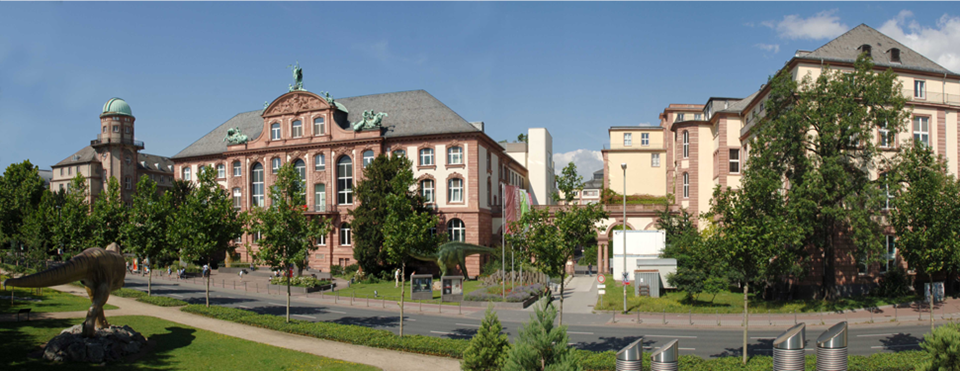
Overview
The Senckenberg Natural History Society runs one of the largest natural history museums in Germany, located across multiple sites, and conducts research into the evolution of biodiversity from millions of years ago to the present day. In addition it conducts research projecting from past events into the future, to investigate the fate of the diversity of life in the face of climate change and anthropocene challenges.
Holding about 40 million collection units (specimen and series), the Senckenberg Natural History Society houses the largest natural history collections in Germany, ranking among the top five worldwide.
These collections serve as a basis for taxonomic, genetic, ecological, biogeographic, and biostratigraphic research, but are also used for applied environmental research. The Museum considers its collections as an archive of all aspects of life.
The collection includes geological items and fossils as documents of paleo-biodiversity, as well as extensive collections of animals, plants and fungi, including numerous type specimens. In addition, Senckenberg also houses a DNA bank, a tissue collection, and living collections. Staff at Senckenberg utilise a wide range of research methods and research tools. Beside the “classical” toolkits, these include a broad range of specialised laboratories and services ranging from spectroscopy to genome sequencing.
As well as access to the extensive collection, Senckenberg can facilitate access to and host visitors who would like to conduct research in a laboratory. These services include:
- Access to a molecular genetics laboratory centre, which is a state-of-the-art facility which handles more than 10,000 samples per month.
- Access to genomics laboratories with all equipment needed for various high throughput sequencing applications
- Access to a state-of-the-art light-microscopy facilities
- In partnership with the University of Frankfurt, access to the first isotope radio mass spectrometer in Germany, to infer palaeotemperatures in carbonates.
- Senckenberg houses a comprehensive set of biological (preparational, histological, soil and mesocosms) and geoscientific laboratories (e.g., X-Ray Diffractometry, X-Ray Flourescence, Scanning Electron Microscopy, micro-CT, nano-CT).
Senckenberg also offers access to high-performance computation facilities, for genomic, 3D reconstruction, and ecological modelling.
Senckenberg is committed to increasing online access to specimen data and digital imagery, which is provided through the collection databases SeSam (will be discontinued) and AQUiLA.
Dr Tobias Schneck, tobias.schneck@senckenberg.de
Professor Marco Thines, marco.thines@senckenberg.de
Frankfurt, Dresden, Görlitz, Müncheberg, Wilhelmshaven and Tübingen, Germany
http://www.senckenberg.de
Contact
Dr. Tobias Schneck, tobias.schneck@senckenberg.de
Prof. Dr. Marco Thines, marco.thines@senckenberg.de
Frankfurt, Dresden, Görlitz, Müncheberg, Wilhelmshaven and Tübingen, Germany
http://www.senckenberg.de